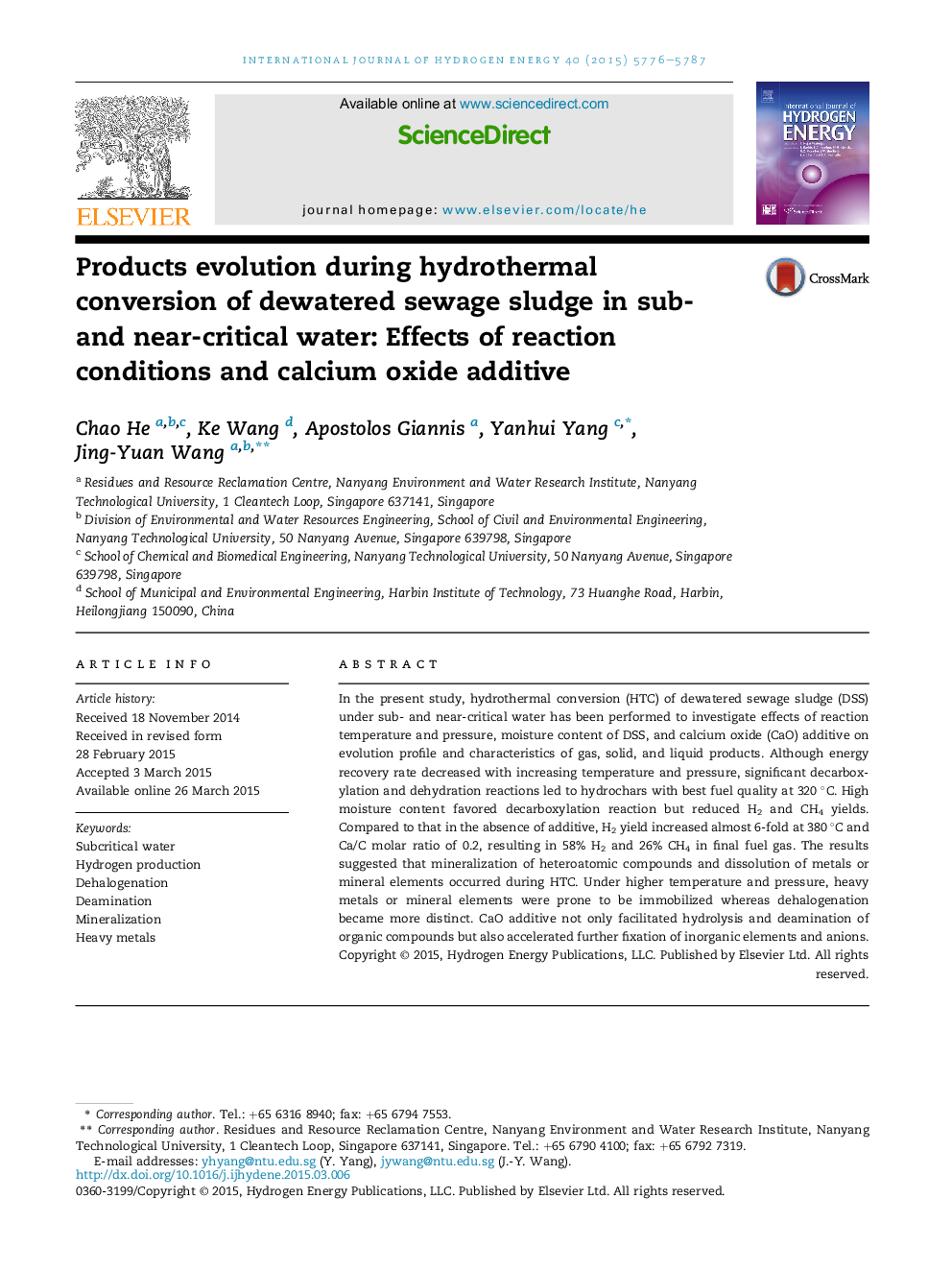| Article ID | Journal | Published Year | Pages | File Type |
|---|---|---|---|---|
| 1275422 | International Journal of Hydrogen Energy | 2015 | 12 Pages |
•Products evolution in HTC of SS was studied at various conditions and CaO amounts.•H2 yield could grow nearly 6-fold and accounted for 58% at 380 °C after adding CaO.•Increased temperature promoted dehalogenation and fixation of heavy metals and P.•High moisture content favored decarboxylation and hydrolysis.•CaO improved hydrolysis, deamination, and fixation of inorganic elements/anions.
In the present study, hydrothermal conversion (HTC) of dewatered sewage sludge (DSS) under sub- and near-critical water has been performed to investigate effects of reaction temperature and pressure, moisture content of DSS, and calcium oxide (CaO) additive on evolution profile and characteristics of gas, solid, and liquid products. Although energy recovery rate decreased with increasing temperature and pressure, significant decarboxylation and dehydration reactions led to hydrochars with best fuel quality at 320 °C. High moisture content favored decarboxylation reaction but reduced H2 and CH4 yields. Compared to that in the absence of additive, H2 yield increased almost 6-fold at 380 °C and Ca/C molar ratio of 0.2, resulting in 58% H2 and 26% CH4 in final fuel gas. The results suggested that mineralization of heteroatomic compounds and dissolution of metals or mineral elements occurred during HTC. Under higher temperature and pressure, heavy metals or mineral elements were prone to be immobilized whereas dehalogenation became more distinct. CaO additive not only facilitated hydrolysis and deamination of organic compounds but also accelerated further fixation of inorganic elements and anions.
